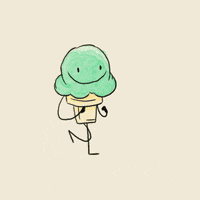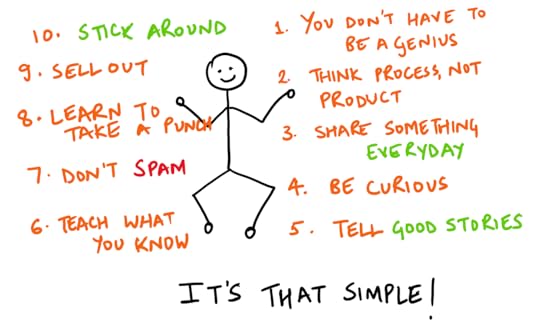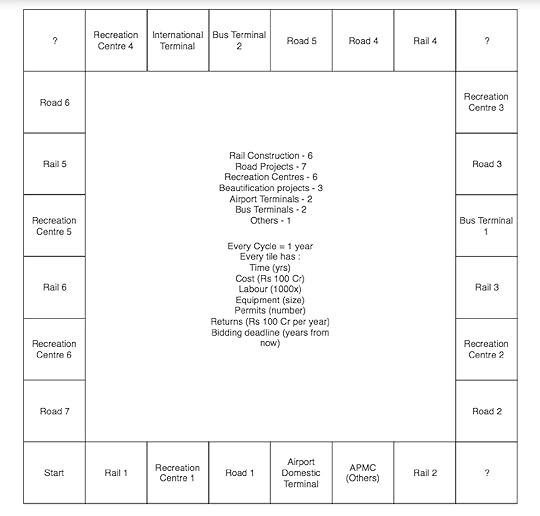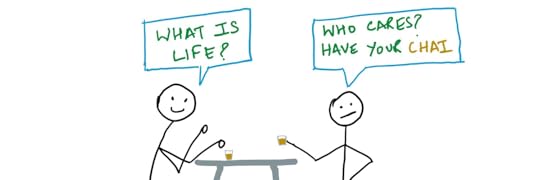Hemant R. Joshi's Blog, page 2
January 27, 2022
I’m starting a new SEO-focussed niche blog
Over the last 3-4 years, through my experiments, one major learning is that I am not good at social media and I need to get better at it in order to continue to grow as an independent writer.
Now, to solve this problem, there are 2 ways:
Improve at social media. This is easier said than done. I have tried this several times, but I’ve realized that the mental drain is too much for me.Find alternative avenues for growing my online presence. Two things here: 1) do interesting things & write about them without being too worried about “growth”, and, 2) master SEOThrough this website, I get a chance to focus on 1.
SEO has been a thing I’ve thought about for a long time now, but never really learned it completely. To change things up, I’m launching a new side project.
I’ll be following this fantastic, free and simple course by Growth Machine in order to build and scale a blog from scratch. I’m picking a niche I am certainly not an expert in, but am definitely curious about.
I have two goals through this project:
Grow primarily via SEO. I’m explicitly not taking a traffic goal just yet, since I’m not sure of the potential yet. Once I know more, I’ll pick a number. Earn passive income through this blog.While I’ll be writing a lot more about this project in the coming days, I’m not revealing the project and the niche just yet. Once I figure out an approach to achieve the above two goals, I’ll share more openly what I am doing.
Wish me luck! And if you want to learn how I am doing it, follow along on Twitter.
June 17, 2021
Making ice cream without a refrigerator
Technology, migration and explorations have tremendously changed what we eat. The story of the evolution of ice cream is one such story.
Ice cream is one of the most wonderful human creations. Today, ice cream is a $66 bn industry, and is still growing. But when it started spreading around the world, it wasn’t meant for everyone to consume.
It was considered a royalty, until some enterprising individuals decided to make it available for the masses, very much similar to the history of sugar.
So, what does the history of ice cream look like? And how exactly did they make ice cream before refrigerators existed?
 The origins of ice cream
The origins of ice creamLike almost every other food on the planet, there is no single person who invented ice cream. However, we see that back in 200 B.C., people in China had started creating a dish of rice and milk, which they froze by packing in snow.
Tadaa – the earliest variant of ice cream was born. How they arrived at this combination seems like a result of a lot of hit and trial. Most food we eat today has evolved over decades, if not centuries. Ice cream is no different in that regard.
The Chinese kings started filling pots with milk and syrups, and placing them in the snow in order to freeze them.
It is also known that the rulers around this time indulged in desserts of snow. Alexander the Great enjoyed eating snow flavoured with honey.
But, these desserts were restricted to the royalty. Ice cream was not a widely known product yet.
Spreading across the worldAnd then came the time of the European explorers. Some sources suggest Marco Polo brought back ice cream recipes from China to Italy. However, this could be a made-up story.
Nevertheless, the point being, ice cream travelled to Europe, where it became a desert for the royalty. These royal people frequently hosted other kings and queens, and with a thing like ice cream, it was obvious that things would spread!
And yet, it is alleged that some of the royalty tried to keep the ice cream recipe a secret!
But good things eventually spread in the world. And so did ice cream. Cafe Procope in France started serving Ice Cream to the general public in the late 17th century. They made this ice cream using milk, cream, butter and eggs.
And then, ice cream arrived in America. The earliest known mention of Ice Cream in America is in 1744. And the American elite loved the delicacy. President George Washington is known to have spent $200 (about $3000 today) in 1790 alone on Ice Cream!
Then America, being America, started commercializing the product like anything.
However, there was still a big problem. Refrigerators didn’t exist. So production was slow, and consumption had to be quick, otherwise:

This changed when in 1870, Germany invented industrial refrigeration. And it had a catalytic effect on the industry. Then came the invention of cones, hundreds of flavours and varieties of ice creams, and so on.
Long live ice creams!
In another part of the worldEurope and America were not the only places where ice-cream was created and consumed. In the 16th century, “kulfi” started becoming popular in India.
The word Kulfi is derived from Farsi. Kulfi means “covered up”. Flavoured with pistachios, saffron, and other dry fruits, Kulfi was usually surved in small matkas which would allow it to be stored for longer and prevent it from melting.
But in India, especially in Delhi, where the rulers had their capital, there was no snow to freeze ice cream. So how did they make ice cream in the sweltering Delhi heat? Some sources suggest they transported Himalayan ice to warmer regions, but I don’t believe that would have been enough.
But they knew how to freeze ice cream.
Okay, back to chemistry. How is ice cream frozen?The basic idea of how ice cream has remained the same over the years.
You fill up a bucket full of ice, then place a pot of cream, sugar and whatever flavour of ice cream you want. Then you add some salt to the ice. Let the magic happen!
What actually happens in this process?
Salt, as you might know, lowers the freezing temperature of ice. This is also the reason why salt is poured over snow-covered streets in the winter.

Now, because the freezing point of ice is lowered, it needs energy to melt.
And where does it get that energy from? Surprise, surprise! From our pot sitting in the middle. It starts sucking out the heat from the pot, resulting in the pot and its content cooling down (and freezing) while the ice outside starts melting – however, the melting is very slow.
And you can use this same process to make more ice, so once you have some supply of ice, you can continue to make ice and ice cream.
This principle was the primary way in which ice cream was made, until the advent of refrigerators.
Earlier on, “saltpeter” was used instead of salt to freeze Kulfi. At the time, saltpeter was used for making fireworks and gunpowder. It is likely that someone stumbled upon its freezing properties.
The History of Ice Cream (todayifoundout.com)The story of Kulfi – STORY OF THE KULFI (kesarsweets.com)Saltpeter for making ice cream – How Did They Make Ice Cream in the 17th Century? (gizmodo.com)If you liked reading this essay, do subscribe to my newsletter, Magnifier, where I share such essays every week:
Email address (required) Subscribehttps://www.getrevue.co/profile/hemantrjoshiSubscription received!
Please check your email to confirm your newsletter subscription.
June 10, 2021
The tech innovation in Formula One
Formula One is one of my favourite sports. Things could turn one way or the other in hundredths of a second. For example, in the Azerbaijan Grand Prix in 2021, the race leader, Max Verstappen, had a crash 3 laps before the race was about to end. Within a split second, he went from position one to out of the race.
Sometimes, Formula One gets a bad reputation – that it is a rich man’s sport. While a part of it is actually true, I think this image tends to belie the decades of technological progress we’ve made in automotive technology, which has made the world a safer place to live in.
Through this post, I’ll talk a little bit about Formula One.
What exactly is Formula One?In a nutshell, Formula One is a car racing championship, where 10 teams compete every year for the World Championship. Cars drive fast, like this:

Each race lasts about 2 hours of total time, preceded by many many hours of preparation and years of training. In short, it is like any other worldwide sport – you train for years and prepare for matches lasting a few hours.
The “Formula” in Formula 1 stands for a series of rules that all participants have to adhere to. These rules are decided by a governing body called FIA, which creates rules not just for F1, but also for Formula 2 and many other racing championships.
The first F1 championship was held in 1950, and was originally dominated in Europe. The FIA in the recent decades has made a concerted effort to take the sport global, and now races are held across the world.
Alright, so what’s different?Let’s look at some facts —
Today, the cars can have a top speed of about 325 kmph.Cars can go from 0-150kmph and back in less than 4 seconds.Drivers can lose up to 6kgs in a single race! Wait, what?Team yearly budgets run upwards of $100 million, with several teams spending more than $400 million dollars every year.Depending on the tyres used, a car can’t go for more than 30-40 laps (1 lap = around 5 to 6 km, depending on the track). Cars often have to take a pit stop to change their tyres.Micro-seconds count. A driver can take 1/1000th of a second more than another driver, and thus be judged to be behind the other driver.And what about the drivers?Well, they are incredible athletes to say the least. Unlike driving a normal car, here’s some things they experience:
While turning and braking, the G-force they experience can be 4 to 5G. This is basically 4 to 5 times the regular gravitational force of the earth. This is similar to the G-force experienced by flight pilots who do rapid somersaults. These G-forces can make you faint if you’re not trained to handle them. F1 drivers have to specifically train to ensure they can handle such stress on their bodies.A single lap could have 19-20 turns, which means that every second, you might be turning your car in a different direction, while decreasing your speed from 300 kmph to 100 kmph, while also looking around to make sure no one is overtaking you, and also trying to communicate with your team about your car’s status. Well, talk about peak performance…
3. The drivers also have to juggle a lot of moving parts in their cars. Take a look at the steering wheel itself. There are so many buttons and knobs on it that you have to click on within seconds that mistakes are easy to make, unless you are hyper-focused.
 F1 steering wheelNot to mention the biggest risk these drivers face – that of losing their lives. A single wrong push of the pedal or cranking of the steering wheel could crash your car. Over the years, several people have died driving an F1 car.
F1 steering wheelNot to mention the biggest risk these drivers face – that of losing their lives. A single wrong push of the pedal or cranking of the steering wheel could crash your car. Over the years, several people have died driving an F1 car. That seems like a lot of risk.
That seems like a lot of risk.It is. In the second last race of the 2020 season, Romain Grosjean’s car pierced through the barricades and went beyond the racing track limits, before bursting into flames. While several people had started to lose hope, like a phoenix, Romain walked out of the burning fire and towards an ambulance waiting for him.
Thanks in part to the decades of innovation in safety – the fire suits, the design of F1 cars that minimizes impact on the driver, the design of the circuits to ensure that other drivers are safe, the hundreds of safety protocols, and of course, sheer luck!
 Grosjean survives!
Grosjean survives!Check out this video to see the miraculous escape.
But the game goes on, just like life! Over the decades, FIA has heavily invested in making the sport a lot more safer. A recent example is the halo design on top of the cockpit, which prevents drivers from damaging themselves. It is suggested that the halo played a major role in saving Romain Grosjean’s life as well.
Why is F1 called a team sport?Just like every car has tens of thousands of moving parts, a driver cannot win without the adequate support of his team.
During a race, there is a lot more going on behind the scenes while the driver is trying to win. For example – there are people monitoring data about how the car is behaving, some who are observing the competitors and optimizing their strategy, and so on.
Drivers also often have to pit during a race. Nowadays, pit stops last 2 seconds and are a key part of racing strategy for any team. Take longer than that, you lose your spot. Avoid a pit stop, and you might gain a few spots. Of course, this is easier said than done. There are several variables at play here.
 F1 pitstop
F1 pitstopLet’s take an example of how things could fail. In the 2021 Monaco Grand Prix, Valteri Bottas was driving in the second place when his team decided to change the car’s tyres. He drove into the pit lane.
But guess what happened?
One of the guns that unscrews the tyre from the axle got jammed! As a result, the existing tyre could not be removed from the car, as Bottas helplessly watched towards his pit crew trying to remove the tyre.
In the end — Bottas had to end his race. Quite a bad result for someone who was in the second spot and had a real chance of winning the race!
Technological innovation aided by sportYou might have guessed by now that the sport requires a lot of technological innovation by the teams in order to win races. This, in fact, improves our cars on the road.
Let’s take a few examples —
KERS (Kinetic Energy Recovery System) — introduced in the late 2010s, this system allowed the energy generated from braking to be stored and reused to give the cars an additional push when they had to overtake. Today, this same system is used in a lot of hybrid cars and buses, which helps make our cities greener.Data transmission and monitoring — Public transportation has also seen benefits of innovation coming from Formula One. Singapore’s Mass Rapid Transit system now uses sensors and data tools that once were introduced in Formula One.Innovation in materials — The innovations in aerodynamics and materials engineering have found their way to other sports like cycling and sailing, where aerodynamics play a huge part in improving performance.In conclusion…Humans are motivated by games and competition. By adding technology as a key requirement for playing these games, F1 has helped us make some serious technological prowess.
A lot has happened and a lot is yet to be seen, but as I write this essay, my love for the sport has only grown!
I am once again (unrealistically) dreaming of the day I get to drive an F-1 car…
 Want to learn more about F1?A newbie’s guide to Formula One – A good article that will help you know all you need to if you want to start following the sport.Formula 1 – Drive to Survive: An excellent docuseries by Netflix covering the behind-the-scenes of Formula One.Formula 1 official site: Look through the history of Formula One, its technology, and everything else.
Want to learn more about F1?A newbie’s guide to Formula One – A good article that will help you know all you need to if you want to start following the sport.Formula 1 – Drive to Survive: An excellent docuseries by Netflix covering the behind-the-scenes of Formula One.Formula 1 official site: Look through the history of Formula One, its technology, and everything else.I write every week about how technology is influencing our lives. Come, learn with me at Magnifier (substack.com)!
May 23, 2021
The need to show your work
I recently had a chance to read the book – Show Your Work, by Austin Kleon. To say that the book has been an eye-opener will be an understatement.
Barely a hundred pages long, this was the book I needed at this time.
I have been thinking about what to write consistently, now that I’ve finished the Level Up series. This book helps me create a system for my overarching strategy towards writing.
While I’m still creating a “system” for publishing regularly, here’s what I took away from the book.
 Show Your Work in a picture!A couple of highlights which I likedOn sharing your process
Show Your Work in a picture!A couple of highlights which I likedOn sharing your processAn excerpt from the book —
We’re not all artists or astronauts. A lot of us go about our work and feel like we have nothing to show for it at the end of the day. But whatever the nature of your work, there is an art to what you do, and there are people who would be interested in that art, if only you presented it to them in the right way. In fact, sharing your process might actually be most valuable if the products of your work aren’t easily shared, if you’re still in the apprentice stage of your work, if you can’t just slap up a portfolio and call it a day, or if your process doesn’t necessarily lead to tangible finished products.
I’ve been writing fiction consistently for more than 6 years at this point. But I’ve always struggled to build an audience. The reason – I absolutely detest “marketing” what I write. Sure, I can go and post a link on social media, but it is not a natural strength of mine to go to a thousand people and talk to them about my book. It feels like I am boasting about my book.
The paragraph above changes that for me. It basically says that there is always something you can share about what happens behind the scenes, and this information will help you find your audience.
As I pondered about what I could share with others, I realized that there’s actually quite a bit. For eg: having published 2 books and several short stories, I can share my journey of publishing, what I have learned in the process and how these learnings could benefit others.
Earlier this year, I had written a long post about all of my online “experiments”. I think that is the right approach to sharing content. Expect a lot more of these.
Also, as I write more short stories, like the Level Up series, I realize that writing “Behind the Scenes” is actually important. The reason —
No, words don’t speak for themselvesArtists love to trot out the tired line, “My work speaks for itself,” but the truth is, our work doesn’t speak for itself. Human beings want to know where things came from, how they were made, and who made them. The stories you tell about the work you do have a huge effect on how people feel and what they understand about your work, and how people feel and what they understand about your work affects how they value it.
This was a big realization. If you think more about it, any specific moment you remember is special because there’s a story associated with it. For example, you wanted something desperately, you achieved it. How you did it makes up the story. And this is the reason why you remember that photo you took, or that cake you baked, or the joke you thought of!
By telling the stories behind my stories, I hope to share my process, and in turn, gather like-minded folks.
To conclude…Make stuff you love and talk about stuff you love and you’ll attract people who love that kind of stuff. It’s that simple.
No explanation needed for this quote.
To learn more about the book here’s a detailed summary, or you can find the book on Amazon.
If you want to receive similar book notes, please add your email address here. I won’t spam you with unnecessary emails 
March 16, 2021
WeWork and Theranos – what do we learn?
A few weeks ago, I finished reading a book called “Billion Dollar Loser” – a book about the epic disaster at WeWork. The company, which was going to IPO at a valuation of $47bn once, was valued at less than $10bn weeks later, and also decided not to IPO.
Right after, I saw a documentary about another company called Theranos, another colossal startup failure.
Both of these made me wonder about the motivations of founders. What was it they were really wanting that they kept growing their companies despite not having a business that worked?
What exactly happened?Theranos, founded in 2003 was a startup “revolutionizing” blood tests as we know them. The company was building a device that could conduct more than 200 blood tests with just a few drops of blood, instead of the test-tubes full of blood that is collected today in blood testing centres. The company claimed it required only 1/100 of the amount of blood that would ordinarily be needed.
At its peak, the company was valued at $10bn dollars.
But there was a problem. The company didn’t have a working product! It was all a scam. And what’s more interesting is that the company managed to convince giants like Walgreens (a large pharmacy chain in the US) to be its early customers.
As more and more people started coming out and telling that things were not how they looked, investigations started in 2016. The company became defunct in 2018.
WeWork was a different game altogether. WeWork is a company that rents real estate to freelancers, small businesses and enterprises – a modern concept called co-working spaces. The founders of WeWork always mentioned that they were not renting real estate, but were building a “global community” of workers. They claimed the company was a tech company, but really, it was a real estate business that didn’t scale very well. Yet, they were able to get to a sky-high valuation of $47bn when they filed their documents for IPO.
Weeks later, as the investigators started poking holes into their IPO documents, the onion started getting peeled. The company lied on its financials, was losing much more money than it stated, and it didn’t have much of a “tech operation.” As a result, the company decided to back off from its IPO. Later, the investors in the company decided to oust its CEO, who got $1.7bn to get away from the company. WHAT?
The problem, in both the cases, lay at the top – the founders.
About the foundersBoth Elizabeth Holmes (Theranos) and Adam Neumann (WeWork) seemed great at selling. Elizabeth consistently motivated her employees to think that they had a breakthrough product, even if the employees knew they didn’t have much going. Adam was able to convince investors that the company was a tech operation, and was building a physical social community, kind of like Facebook or Twitter, but in real spaces. Real estate just happened to be a part of the business.
Both of them seemed a little delusional – Elizabeth believing that what she was doing was good for the world, while Adam thinking that he was genuinely building a global community that could help each other. But, how could they not honestly look at the world around them? In one case, the product didn’t work (and this was blood tests – the accuracy of medical reports is of supreme important. One mistake and you could kill people). In the other case, the company was spending too much money and didn’t show any value on the community aspect. Sure, they might have had the right intentions at start, but later, how could they be delusional when raising more and more money? It seemed like they were chasing higher valuations, and not sound businesses.
Both of them were unafraid of lying in public. Theranos, for example, made a claim that they were making $100mn in revenue when they were really making $100k. WeWork came with its own way of calculating EBITDA, calling it the “community adjusted EBITDA”.
[EBITDA = the money a company makes before taxes]
What about the investors?Venture capitalists (VCs) have to take huge bets with very little data. It is assumed that if you invest in 20 startups, only 1 or 2 are going to succeed and others are going to fail. But the returns on those 1 or 2 are 10x, 20x, or even higher, which cover up for the losses with the other firms.
In venture capital, you cannot invest in any company you want, like you can in the stock market. You need to get permissions from founders in order to invest. As such, there’s a great demand among VCs for investing in the top startups, while other startups don’t see any responses to their investment pitches.
In the case of WeWork, something similar happened. One popular firm decided to invest, considering how Adam Neumann was able to convince them of his vision. As a result of this investment, many more people followed. Eventually, the whale in the ocean – Softbank, decided to invest in WeWork. And Softbank was ready to go bold and invest billions of dollars in the company.
But it seemed like diligence was missing. Desperation of the investors to get in on a “fast-growing company” was higher than the patience required for diligence.
A quote about WeWork from the book:
“These people invested, they knew the terms, they knew about the governance issues, and they told this guy, ‘Be you, but be ten times you.’ What did they expect?”
Billion Dollar Loser
To give the investors credit, I think this is a really hard game they are playing and such misses can happen.
They can screen for “intellectual honesty” to an extent, but are probably not going to know someone’s inner motivations fully. In both the cases, it is clear that the founders were passionate about their companies, but they were not honest.
This to me seems like the core issue here.
Sure, as founders, you are visionaries. You chase visions that people don’t believe in, maybe for years, but lying is not the solution. You can say your business is not working currently, but you have a plan to make it work. But saying that your business is going great just to raise your valuations is problematic.
In conclusion, what I’ve learnt is scamming is not that hard. It all boils down to how honest you are.
References:
Billion Dollar Loser – the story of WeWork – book linkThe Inventor: Out for blood in Silicon Valley – the story of Theranos – documentaryTheranos – WikipediaWeWork’s IPO disaster – VoxIf you’re interested in receiving more stories like the above, please put in your email here and I’ll share them with you. I don’t send any spam, promise 
Subscription received!
Please check your email to confirm your newsletter subscription.
March 6, 2021
A brief history of sugar
Today, sugar is a ubiquitous substance. The entire world craves for it. But this was not always the case. The spread of sugar is a fascinating study for how products that were once not even necessary have become indispensable today.
 Photo by cottonbro on Pexels.com
Photo by cottonbro on Pexels.comHere’s a brief history of how it happened –
Some sources suggest cane sugar originated in India, while others state that it originated in New Guinea. Initially, canes were enjoyed just by chewing into them, but Indians started refining sugar from canes in the 4th century BC.
Soon after, they started mixing sugar with other food such as milk, rice, etc. to create puddings and other sweets.
300 BC – 1000 AD: Western explorers who came to India started taking it westwards, studying sugar as a subject for medicinal use to treat intestinal and kidney-related diseases. At the same time, sugar also started getting domesticated in the East, as Chinese imperials took their learnings back.
By 650 AD, as the Arabs started raiding Persia, India and the Mediterranean, they started gathering knowledge about Sugar, and used it not only for medicinal purposes, but also as a delicacy for the royalty.
1100 AD: European soldiers brought Sugar from their conquests to Jerusalem, thus kicking off sugar’s popularization in Europe. But Sugar was still very expensive by 1300 AD.
1500: The real “price reduction” of sugar began with the Spanish colonization of Canary Islands around, when they started mass producing sugarcane on the archipelago. Because of this, Spain dominated the European sugar market. The portuguese were fast to follow.
1500: Their discovery of Brazil leads to sugar plantations in Brazil. With the rapid advances they made in technology, Brazil soon dominated the world sugar industry!
But around this time, the dark history of sugar began
Early 1600s: Because of the rapid expansion of Sugar plantations in South America, exporting slaves to plantations in South America began.
Prices continued to fall. Demand continued to rise.
1900s: Prices fell so much that producers in the US started to collaborate in order to increase prices. Around this time, the development of beet-extracted sugar, as opposed to cane sugar, continued to rise in the US.
The Indian government incentivized the production of sugar by protecting the industry from foreign companies. This continued well after its Independence, as sugarcane production exploded in Northern India.
2000s: India became the largest producer of sugar products (including gur, khandsari), followed by Brazil.
What started as a medicinal product to relieve kidneys and intestinal irritation grew into a premium product, then into a commodity that anyone could eat, thus leading to is overuse.
Today, we’re grappling with the ill-effects of over-consumption of Sugar.
Sources:
https://www.saveur.com/sugar-history-of-the-world/
https://en.wikipedia.org/wiki/History_of_sugar
Subscribe to my newsletter here to get my essays. I publish about once every two weeks.
February 19, 2021
A brief history of samosas
My fascination with Samosas had me go down the rabbit hole of finding their origin story and write a Twitter thread about it.
 Photo by Satyam Verma on Pexels.com
Photo by Satyam Verma on Pexels.comSamosas originated in the middle east. Persian literature from the 10th century has a lot of mentions of early variants of the modern samosas. These samosas were filled with minced meat.
In the 13th century, traders brought them to India. Made with meat, ghee and onions, they became popular in the Delhi Sultanate. Samosas were almost always filled with meat. Literature around this time doesn’t have a mention of *vegetarian* samosas.
To learn about the potato-filled samosas, we’ll have to take a detour and learn the history of potatoes. Till the 16th century, the potato was indigenous to Peru, and unknown elsewhere. As European explorers opened the world, potatoes spread across the world.
17th century: Potatoes came to India via the Portuguese. Fun fact: they were called “Batata” by the Portuguese, which is what we call them in Marathi even today. The consumption of potatoes was still restricted to West India, where Portuguese had set their bases.
18th century: The East India Company started to incentivize farmers in Northern and Eastern India to grow potatoes. Initially, this was for their own consumption, but once we tasted potatoes, how could we resist? Mass production of potatoes began!
My deduction based on the above (couldn’t find a source): In the 18th and 19th centuries, as potatoes became common, they started replacing meat in Samosas (*probably* influenced by vegetarianism and the delectable taste of potatoes).
Today, the samosas are spread across the world with differing fillings, tastes, and cooking methods. But they are a symbol of globalization in the medieval and modern ages. Highly recommend reading the wiki article about the spread of potatoes.
—
Sources:
On samosas: wikipedia
The story of potatoes:
February 11, 2021
Are increasing life spans a good thing?
Last year, I read a book called Factfulness by Hans Rosling. This book has, to an extent, changed my perspective on human evolution. It has provoked thoughts in me, led me to read up more on how we as the human race are heading, and given me a number that I’m fixated on.
The world population will peak at 11 billion people.
This gives us a great way to think of the future. As a Product Manager, opportunity sizing is something I do frequently, but this is sort of the opportunity of how many people you can potentially reach in the decades to come.
Also, you can also calculate how much resources (food, water, housing, internet bandwidth, carbon emissions, etc.) we need in order to sustain a good life. Sure, you won’t be accurate in predicting, but you would be able to get a general sense of how much more we need.
But the book did more.
It talks about how human life expectancy improved from 35 about 2 centuries ago to 70+ years currently.
The reason I am writing this essay just now is because of an equally interesting concept I came across a few weeks ago. In this video, Anshumani Ruddra (Chief Product Officer at Hotstar) speaks about how we need to constantly innovate to stay relevant these days. One relatively smaller point he did talk about was the concept of retirement at 60.
With our life expectancy increasing, retirement at 60 will no longer be viable in the future. We will live longer, thus needing more food and resources, thus needing more money in our later years, so our retirement savings would have to increase. Chances are – to increase the wealth, we will likely work for many more years than decades.
We might work until 70, some will work till even 80 (Amitabh Bachchan, please don’t stop ever!). From our graduation age of 22 to the age of 70, you’ll likely work for 48 years of your life. Now this is interesting for many reasons.
Also, in the decades to come, as machines do more of what we do today ourselves, most of what we do will be replaced with new ones.
This is a thought-provoking concept that presents with itself several opportunities that one can think of.
If you want to learn where the world is headed, I highly recommend taking a look at Factfulness.
If you’d like to read more such essays, subscribe to my newsletter.
Email address (required) Subscribehttps://www.getrevue.co/profile/hemantrjoshiSubscription received!
Please check your email to confirm your newsletter subscription.
February 2, 2021
Too many “platforms”
About a month ago, I was in the middle of my annual website upgrade. I’ve been running this website on wordpress.com and I wanted to look for more flexible platforms.
Specifically, I was looking for a place where I could also embed a newsletter sign-up form for easybuthard.substack.com
The obvious choice was a self-hosted wordpress site. I started down this route and bought hosting and was about to start when I remembered why I hadn’t gone this route in the first place. My previous experience with a self-hosted wordpress blog (for a different site) was terrible. The website was slow, it was down frequently, I had to contact the hosting service for support, etc. Though the support was good, that it was required so frequently was the problem.
I also scouted the market for other platforms – using Wix, Squarespace, hosting on Notion, Medium and Ghost! Each one had some or the other drawback. I’m not going to get into each platform. There’s enough review sites already which can help you compare.
After almost 15-20 days of scouring the internet, I decided to come back to wordpress.com. I didn’t want a single day when the website was broken. Also, migrating to a different provider was taking a lot of time.
I was fine with not having a subscriber popup. At some point, I’ll create a separate landing page for Easy But Hard.
But this problem of too many tools is widespread across the internet. Not only in the case of publishing, but everything: from entertainment, payment gateways, website hosting providers, non-fiction books, blogs, investment advice, and whatnot!
So much choice, that we end up choosing nothing.
The world works in waves. Technologies expand and contract. While the first 40 years of the internet were all about creating something new through expanding our knowledge, the time is right to move towards compression.
 Photo by Matt Hardy on Pexels.com
Photo by Matt Hardy on Pexels.comAnd there are examples already!
Curating information is getting more and more popular, as compared to creating. This is best seen through newsletters like The Browser, which have now become companies of their own. Twitter, YouTube, and the internet in general is filled with people curating content for their audiences.
Similarly, we need to compress the tools we have into ones that “get the job done”. WordPress, once built to solve problems, has gotten bloated over the years. So many plugins, ancient tech, requirement of hosting providers, etc are all problems that seem tiny if looked at individually, but as a whole, they mess people up.
In my case, there are very few products that I’ve loved within an hour of looking at them. Substack was one of them. I purchased the Google Pixel 3a after watching one review video. That’s all it took. I didn’t need to go through hundreds of review videos, ask friends for their reviews, wait for others to report bugs, etc.
I bought it the day it was launched.
The reason: it did what I needed a phone to do: click amazing pictures without being expensive, and not looking cheap.
Substack compressed parts of the “newsletter” model into one platform. It simplified creation by presenting a simple text editor, unlike other platforms where you have a plethora of choice of formats, styles, editors, etc. Substack integrated payments, landing pages and discovery in its core product. A writer’s job became that much easier. Shopify (although I don’t use it myself) integrated payments, supply chain, warehousing, shipping in its product. A business owner just needs to subscribe to shopify to get their online store truly running.
If you are someone looking to build products – think about clubbing the experience of multiple products into one.
If you’d like to receive similar posts in email, subscribe to my newsletter at hemantrjoshi.substack.com. I’ll also send you a free copy of my book, The Advisory Board.
January 25, 2021
Learnings from my experiments
Since I was in college, I’ve continuously kept myself engaged with one or the other “side project.” So far, these have been writing-related projects primarily, but I hope to expand into other types too.
Though the monetary income from these projects is almost nil, the learnings have been paramount.
But what I realized was when I shut down a project, I never looked back to see what worked and what didn’t. The learnings were more implicit. This essay is an attempt to rectify that. I want to articulate the learnings for myself and hopefully not repeat the same mistakes. This could be a useful essay if you’re planning on becoming an online creator.
Side projectsThere are plenty of good essays (like this one) that reflect on the benefits of side projects. For some, the motivation is monetary, for others, it is learning. For me, it is the act of creating something new and presenting it to an audience that keeps me going. And of course, what better way to learn something new than to work on a cool project?
Let’s take a look at some of the projects I’ve worked on. The list of my “thought experiments” is endless. I come out with something new every time I come out of the shower (okay, that might be an exaggeration), but ideas are worth nothing!
The projects I write here are the ones where I made significant progress on executing.
Digital Nervous BreakdownThis was my first project that I completed, with no external deadline. In fact, I told no one that I was writing a book until I signed a publishing contract. In hindsight, that was the biggest mistake I made.
Once I held the book in my hand, I finally felt like I had graduated to being a doer from being a thinker.
The book tanked in the market, with pathetic sales (mostly because I failed at marketing).
Soon after I’d launched the book, there were some hard-hitting learnings.
Don’t “surprise” your audience with your book’s release. It is almost always better to let people know that you’re working on a book and let them follow along your progress. No matter how big your publisher is, you need to build an audience. Sharing progress about your book is an easy way to find an audience early. People love to see the face behind a book and interact with them. You need to be a part-time marketer if you plan to be an author. In all these years, if there’s one weakness of mine, it is marketing. I lack the motivation to market my projects. But I can’t use this as an excuse for too long. When signing up with a traditional publisher, know that a traditional publisher is not going to solve all of your distribution problems. You need to go on the road in order to market your book. I’ve written more about this here. When you launch, friends and family will buy. Don’t think of this as success. It is extremely important to go past this barrier of friends and family. You need people who don’t know you to buy from you. For this, work with book reviewers, bloggers, influencers, etc. well before launching your book. Cold emails and messages are your best friends here. People will ask you for free copies. As a newbie author, I was unwilling to give away free copies to people when they asked me for one. My internal justification – “I’ve put so much work behind this. People can at least pay to buy an original copy and read.” The reality is that people don’t want to pay unless they see strong, validated credentials. So be prepared to give your book away.I’ve taken these into my next book, The Advisory Board (more about that later).
The Trite TribeWhile I was working with my publisher to launch Digital Nervous Breakdown (throughout 2016), I needed a break from the subject. I also had more time on hands, because I wasn’t actively writing, but helping review and edit the book.
After spending more than a year working on Digital Nervous Breakdown alongside working for CAT, GRE and then working towards my post-grad applications, I wanted to do something a bit more relaxing.
Short stories were the perfect way to continue to write fiction, but not committing to something long-form (novels, movies, etc.) that could take years.
I started posting short stories on my website. Most of them were terrible, but some have stuck in my mind till now.
The idea was to put trite people in testing situations and see what they do. While this story series didn’t see much traffic, I developed a true passion for the short story format, and came up with my own template for writing short stories.
The learnings here were not as hard hitting, but I learnt something about the blogging world.
There’s no concept of SEO for short stories. Even after publishing for months, I was not getting any organic traffic. I kept thinking about ways to learn SEO while also staying close to fiction (I still had no knowledge or interest in writing essays like the one you’re reading). The point on having access to your own distribution was re-validated. My stories saw very few people reading, and most were among friends and family. Also, I noticed not enough people were sharing the stories. But like I said, the internal motivation to actively engage with people on FB/Insta, etc was always lacking.Personally, whenever I’ve not been internally motivated, I’ve never continued for more than a few weeks. This shows up in almost everything I do.
The Covert Channel (unpublished)While working on The Trite Tribe, I also started plotting a trilogy of books. This one was about spies and their networks. I even wrote the first draft of the 3 books, which in total accounted to more than 300k words, but after writing a few more drafts, I put this to rest, at least for the time being.
The reason – I didn’t know enough about my characters and their settings. For example, a few of my characters were based in Raxaul, Nepal. I chose this location because of the commercial traffic that moves between India and Nepal. However, I don’t know enough about the town to write about it. I hope to continue researching over the coming few years and see if I should rewrite.
Some learnings:
I could have arrived at the conclusion that I didn’t know enough about the characters and settings sooner – if I had storyboarded first. I didn’t have a sophisticated writing process back then. I started with a basic outline and knew the ending, but that’s about it. I’ve always written the first draft as an exploratory draft, where I figured things out for myself. In hindsight, if I had spent enough time thinking through my characters and their backgrounds, I would have prevented all the effort in writing the 3 manuscripts. Personally, the challenge taught me so much about myself! 5 years ago, I would have never imagined I could write so much in less than 2 years. In fact, I don’t think I can repeat this again.Naklimaal.comBut while I was writing a lot, I was also exhausting myself with only fiction. I wanted to try out commercial blogging (you know, the promise of the internet – write once, make millions, be your own boss, etc.).
But I didn’t know enough about SEO. To learn, I started a fun project that I intended to monetize at some point in the future (through affiliate links or feature interviews).
Naklimaal.com was essentially theonion.com, but for startup news. I was highly impressed with the way fakingnews.com had grown and was hoping to replicate some of it on naklimaal.com.
Oh, and the domain name seemed perfect! How could I not buy it when I saw it? This was the first project where I set some goals before working on it. They were:
Practice humour writing and validate if I can be good at it. Grow traffic via SEO (and in the process, learn all it takes to do good SEO). What did I actually do?I wrote short news coverage posts (think techcrunch, for example), but for entirely fake companies. For example, one headline read – “10 new WhatsApp universities to be set up to train young graduates to write good morning, good night quotes.”
I continued doing this for about 4 months, posting once every week, before I stopped. Why? I guessed people weren’t liking the content much. Maybe I wasn’t a good humour writer. Maybe it was just that people were moving to memes instead of reading such articles.
I think it was more of the former and a bit of the latter.
On the SEO goal – I was able to get my pages ranked in the top 5 results for some keywords, which felt like an achievement.
But, the searches were not too many. So…
Learnings:
My capacity in writing humour needs improvement. I need to step up my game on this. Maybe I’ll start a new project to improve this in 2021. If you want to write a blog that gets a tonne of traffic, you need to do thorough keyword research. You can’t go by only what you like. You know, as YC says, make something people want. I had heard this so often, but I failed to apply this to Naklimaal. I let my curiosity towards it take hold of me.But, no regrets. Naklimaal was a fun project. I never knew I could write humour. Though I didn’t excel at it, I don’t think I was terrible at it.
Project SigmaOkay, now with Naklimaal out of the way and The Trite Tribe slowing down (mainly because I was running out of short story ideas), I had more time on my hands. I was already starting to plot my next book (written down below), but still felt I could do something that was not about writing.
Tadaa – a board game!
One big problem I’ve noticed with the people I interact with is the lack of awareness about the benefits of public transit. There’s enough data out there that states that the best cities in the world have an efficient public transit system.
So, in order to create more awareness around public transit, I started working on a board+card game project, similar to monopoly. The goal was to build a city’s public transit to ensure a sustainable city and avoid its collapse.
I came up with a board structure, the possibilities of gameplay, rules and regulations, and even “bonus cards.” Here’s the board structure:

I tested the idea with one of my friends who seemed to like it, but I stopped working on this because of some other commitments I had at the time. Another person advised me to not do this as a board game, but as a phone app. I wavered for a bit, but never concluded.
Since then, I’ve also seen several phone games available in this genre, so I lost the motivation.
Since I didn’t take this to conclusion, there are not many learnings. But here’s one that I think will help me in the future:
Don’t work in isolation, especially for non-writing projects. I think writing is an individual activity. But things like designing games or experiences need collaboration. Find a co-creator for such things. I should have talked to more people. Maybe even reached out to strangers on the internet? Zoom In, Zoom Out!Bored of reading about too many “fiction” projects so far? Around mid 2019, I was looking to get out of my fiction comfort zone and write some non-fiction. I think the deeper motivation was that I needed some quick validation for my work. Well researched non fiction could give you just that.
Also, I needed a newsletter. As stated above, I’ve always lacked a solid distribution channel for my work.
So, I decided to start a newsletter. Zoom In, Zoom Out! was born. The idea was to look at one business opportunity or a sector every week. I wanted to zoom in to things that we didn’t know enough about, and zoom out for things where we were so deeply involved that we missed the big picture. I committed to publishing every week.
Through the newsletter, I was finding problems, looking at sectors and even identifying solutions to fix those problems. But as I wrote more and more of these – I felt like an imposter. What was the use of writing all this if I wasn’t actually going to work on any of them. It felt like I didn’t have enough skin in the game.
Also, the cadence of publishing weekly was too much to commit to. I didn’t have enough content to produce or curate every week. Yet, I went on for 44 weeks.
I’m evaluating how I could turn this into a more personal newsletter so I can continue to grow my audience and also share valuable stuff for people. I’m still not sure. Please suggest if you have ideas!
Learnings:
Be careful about weekly publishing schedules. As a seasoned writer, I am confident that I can write every day. So I don’t need the external pressure of publishing every week. Instead, if I give myself some more time, I can create content that is a lot more polished. When writing about “thought leadership,” be careful. You not only want to talk about problems and solutions, but do something about them. If you plan to write a weekly personal newsletter, don’t constraint yourself to a few topics. You as a person have more than one interest, and your newsletter should reflect that. The Advisory BoardOkay, now on to my most successful fiction project to date.
Continuing my love for short stories, I decided to write a book inspired by my conversations with taxi drivers. Back in 2017 and 2018, I used to take a cab very frequently for work, and one of my favourite things to do was talk to drivers. More often than not, the experience was revealing in some way.
This informed the theme of the book. By this time, I had also taken some good online courses and read a lot of books on writing better fiction, which influenced my writing a lot.
Since I self-published this book, I was owning everything – editing, marketing, distribution, etc. The thought was daunting, but I wanted to give this a shot – I think traditional publishing works only if your publishing is a big one.
So I spent a lot more time with editors, designers and marketers to figure out how to bring the book to market.
But I sucked.
Though the book was far more successful than my last one (just look at the number of Goodreads reviews for this one), I think there’s a lot more potential the book has to achieve. I’ve barely scratched the surface with its distribution. More to come in 2021 and beyond!
Another thing I realized was that recovering the cost of producing the book seemed impossible. So I decided to use the book itself for marketing. Starting April last year, I’ve started giving out free e-books to anyone interested, as long as they give me their email address. I’m also giving away free paperback copies, as long as people are willing to cover shipping costs.
Some learnings:
(At some point, I’ll write a learnings post specific to my books, which will have more details)
Distribution first. Content later. I think I rushed into publishing the book. I should have worked on building a solid email list beforehand. Online ads don’t work for fiction books (or at least they didn’t work for me). Maybe for building an email list they will work, but building a profitable fiction book business through only online ads is not going to work. To market a book, you need to get into the communities that read books. Book clubs, cafes, reading groups, everything! Find every place that does this, and hand out copies without asking for anything in return. I’ve half-heartedly executed on this in 2020, and there’s more to do in 2021. Create a feedback loop for your book. This is extremely hard. When someone buys your product off of Amazon, you don’t get to talk to them directly. Whereas, when people download the book from your website, you have a chance of reaching out to them later too. I now have a mailchimp automation set up such that 30 days after someone downloads the book from my website, I send them an email to add a Goodreads review in case they’ve read it. And it does work to some extent Books spread through word of mouth. Everything else is temporary. Books have an extremely slow feedback loop. You hand over the book to someone. It lies in their bookshelf for months before they turn to your book. Then they take a month to read it. Getting my point? Social media gives instant gratification. If you want to teach someone delayed gratification, ask them to write a book.It’s fine to be slow and intentional about growth. I don’t care about getting to 10000 sales in a year anymore. All I care about is that more people read the book, and talk to their friends if they like it.
Books spread through word of mouth. Everything else is temporary. Books have an extremely slow feedback loop. You hand over the book to someone. It lies in their bookshelf for months before they turn to your book. Then they take a month to read it. Getting my point? Social media gives instant gratification. If you want to teach someone delayed gratification, ask them to write a book.It’s fine to be slow and intentional about growth. I don’t care about getting to 10000 sales in a year anymore. All I care about is that more people read the book, and talk to their friends if they like it.I can go on and on about the book, but let’s move on.
Long-form articlesIn early 2020, I got very interested in what David Perell was doing with the Write of Passage fellowship – where he was coaching people to write a 10 thousand word essay on their site.
I wanted to join the fellowship, but the cost was prohibitive for me.
So I decided to self-learn by writing a 10,000 word long essay. I decided to write a compilation post of all the industries that I think are going to grow in India in the next decade.
I wrote this over 2 months and published it in March 2020, to an excellent response. This was my most well-received online essay. I had 100 weekly readers for a few months just because of this post.
But soon after, COVID struck. Most of my predictions were thrown out of the box. I will have to revise this piece to reflect the modern reality we live in.
But in order to not stop, I wrote another 5k word article on one of my favourite products in the world – YouTube. I think I did a good job of going through the past, present and future of YouTube in this essay. The act of researching for this essay was so much fun.
Some learnings from writing these essays:
For such long-form essays, it’s better to focus on timeless stuff. I had initially thought my next decade essay could be relevant for 10 years from now, but with COVID, that is no longer the case. Having said that, I think it is extremely hard to find timeless topics to write long-form essays about. I’m thinking of new topics, but nothing is coming out yet. Maybe, I’ll convert my YouTube article into a sort of a YouTube biography essay, that could be read ages from now? To promote a long-form essay, also create bite-sized, micro-content pieces that could be shared across Twitter, Instagram, etc. to generate traffic. Twitter threads are especially useful for these things. I’ve tried a few Twitter threads on a variety of topics, and they have delivered great results. Easy But HardLet’s come to the final experiment in this list (at least for now). Life can be easy at times and hard at others, but it is eventful for sure. The Trite Tribe taught me a lot about short stories, but it had one fault – I posted it on the blog and people had to visit the website to read it.
I wasn’t collecting emails. Today, you’ll find a newsletter for almost all topics you can think of, but very little short story series that get delivered in the format of a newsletter.
Easy But Hard is my attempt to change that. I write a very short story (which takes 4 to 5 minutes to read), is entertaining, and takes you away from your busy email inbox! So if you need a break on a Monday but pretend to be working, open up your email inbox and read a story 
My personal goal here was to test ideas for new longer stories and also find an audience for my writing.
So far, the experiment has been mildly successful. I have ~180 subscribers and a consistent ~20% open rate. I have tested a few story formats through the series – some have worked and some haven’t, but getting this feedback is super useful as a writer.
Learnings:
The audience for such an experiment is limited. At least you won’t find them on Twitter or Instagram. You need to go to different reader communities and get people from there. If you want to grow fast, consider spending on Google/FB ads so you could reach out to the right people. I haven’t spent on marketing yet, but maybe I should.People don’t want to read short stories every week. I recently asked some of my subscribers why they don’t read posts each week. They like to treat Easy But Hard as a place where they could go once in a few weeks to take a break. They don’t want to make it a ritual to read every week. Fair enough! Instagram is an excellent channel to post stories in a pictorial format and build an audience on the platform itself. I’ve been posting some stick figures on Instagram and they’ve connected with people more than the stories I’ve sent via email (likely because people don’t want to read?).Some learnings about myselfThrough all these side experiments, there are some things that I came to learn about myself.
I like starting things, but often don’t follow up. For example, I had a good start with writing Twitter threads in 2020, but have been inconsistent with doing more of these.Though I’m consistent with writing, since I’m focusing on too many formats and topics, I end up being inconsistent in all. But I struggle to stick to one. I am a polymath and proud of it. But still, I’ll try to stick to a few formats so I can be more consistent. I prefer writing fiction. Just the pure pleasure of discovering something new about people keeps me going. If someone else has figured it out, why should I write about it again? But that’s not to say I don’t want to write non-fiction.I get influenced very easily by what I consume. Twitter makes it so easy for my thoughts to jump in random directions that I want to start too many projects, but don’t have the time. I need to get better at consumption.
If there’s one takeaway for you as a reader who wants to create online, it is this – start gathering an audience well before you have a product. Figuring out how to do that is hard.
If you want to chat more about these side projects or something else, shoot me an email at hemantrjoshi@outlook.com.
This is the first time I’ve been so public about my learnings. As I am writing this last sentence, I am so relieved!
Thanks for reading 



